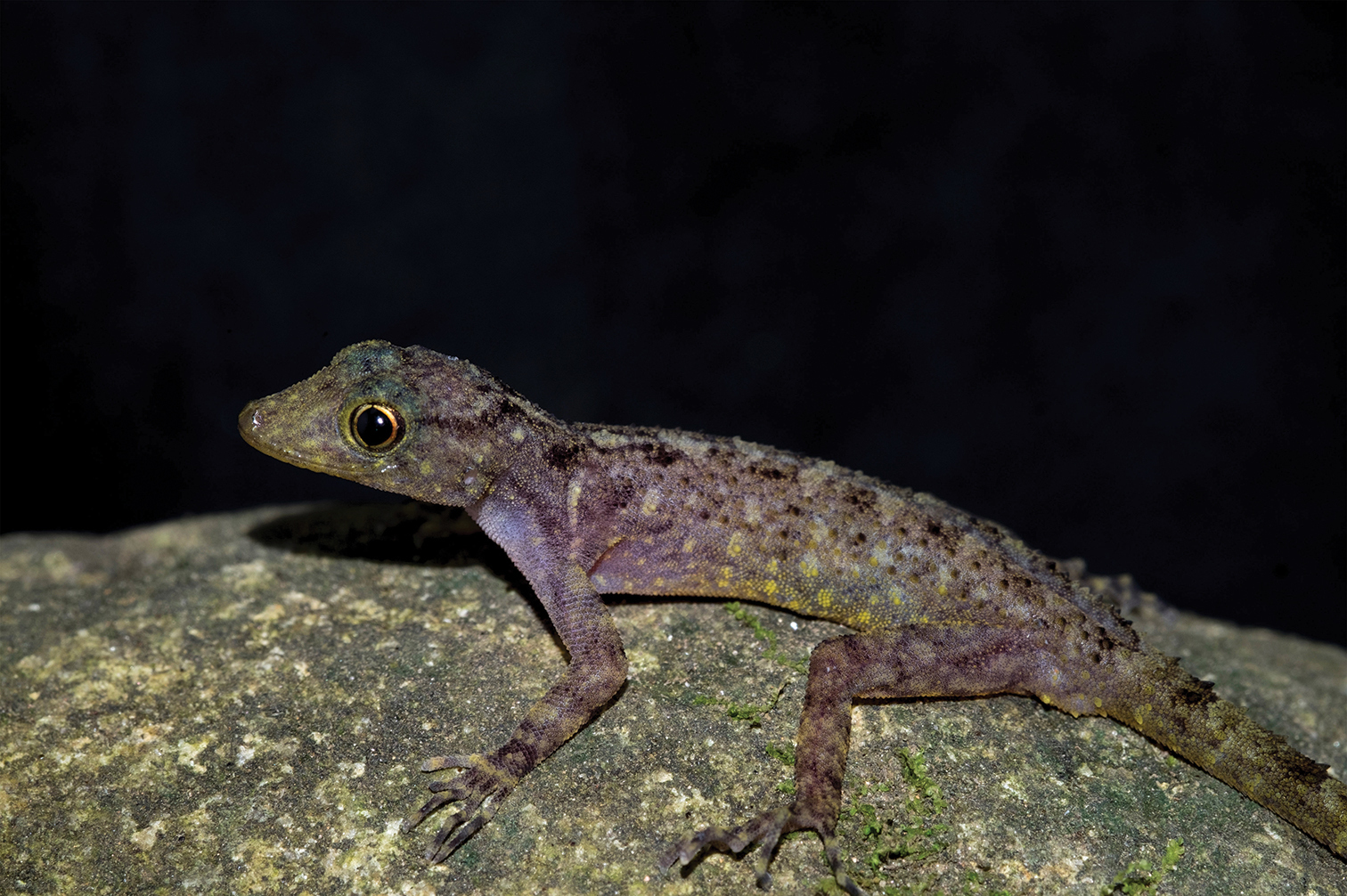Authors: Natee Ampai, Perry L. Wood Jr, Bryan L. Stuart, Anchalee Aowphol

Cnemaspis lineatubercularis sp. nov. - Maschio - Ampai et al. 2022
La pubblicazione del Dott. Ampai e colleghi è l'ennesima conferma di come l'utilizzo di analisi comparative fenotipiche e molecolari porti alla scoperta di nuove specie, anche quando sembrano simili ad altre.
Cnemaspis lineatubercularis, la nuova specie scoperta, deve il suo nome alle linee di tubercoli che corrono lungo la colonna vertebrale. Un elemento molto interessante in riferimento a questa specie è che ad oggi sembra essere un micro-endemismo, che popola solo lungo i corsi d'acqua del Mai Pak Waterfall, nella zona montuosa di Nakhon Si Thammarat. Non si può certo parlare di specie "acquatica", ma il suo legame coi torrenti è sicuramente un adattamento interessante, forse dovuto ad un tipo di insetto che popola le stesse zone.
Inoltre, l'articolo dimostra che molto probabilmente il Sud della Tailandia nasconde ancora alcune specie appartenenti al genere Cnemaspis, ma non ancora classificate.

Cnemaspis lineatubercularis sp. nov. - Habitat - Ampai et al. 2022
Abstract
The rock-dwelling gecko genus Cnemaspis is one of the most species-diverse genera of gekkonid in Thailand. Earlier studies relied on morphological data to identify species, but cryptic morphology often obscured species diversity in Cnemaspis. In this study, an integrative taxonomic approach based on morphological characters and sequences of the mitochondrial NADH dehydrogenase subunit 2 (ND2) gene were used to clarify current taxonomy of the Cnemaspis siamensis complex and delimit a new species from Lan Saka District, Nakhon Si Thammarat Province, southern Thailand. Cnemaspis lineatubercularis sp. nov. is distinguished from other congeneric species by the combination of morphological characters: (1) maximum snout-vent length (SVL) of 40.6 mm (mean 38.8 ± SD 1.4, N = 12) in adult males and maximum SVL of 41.8 mm (mean 39.5 ± SD 1.9, N = 7) in adult females; (2) 8–9 supralabial and infralabial scales; (3) gular, pectoral, abdominal, and subcaudal scales keeled; (4) rostral, interorbitals, supercilium, palmar scales, and ventral scales of brachia smooth; (5) 5–6 small, subconical spine-like tubercles present on flanks; (6) 19–21 paravertebral tubercles linearly arranged; (7) 27–29 subdigital lamellae under the fourth toe; (8) 4–7 pore-bearing precloacal scales, pores rounded arranged in chevron shape and separated only in males; (9) one postcloacal tubercles each side in males; (10) ventrolateral caudal tubercles present anteriorly; (11) caudal tubercles restricted to a single paravertebral row on each side; (12) single median row of subcaudal scales keeled and lacking enlarged median row; and (13) gular region, abdomen, limbs and subcaudal region yellowish only in males. Genetically, the uncorrected pairwise divergences between the new species and their congeners in the C. siamensis group were between 15.53–28.09%. The new species is currently known only from granitic rocky streams at Wang Mai Pak Waterfall in the Nakhon Si Thammarat mountain range. Its discovery suggests that additional unrecognized species of Cnemaspis may still occur in unexplored areas of southern Thailand.
Per saperne di più clicca qui.